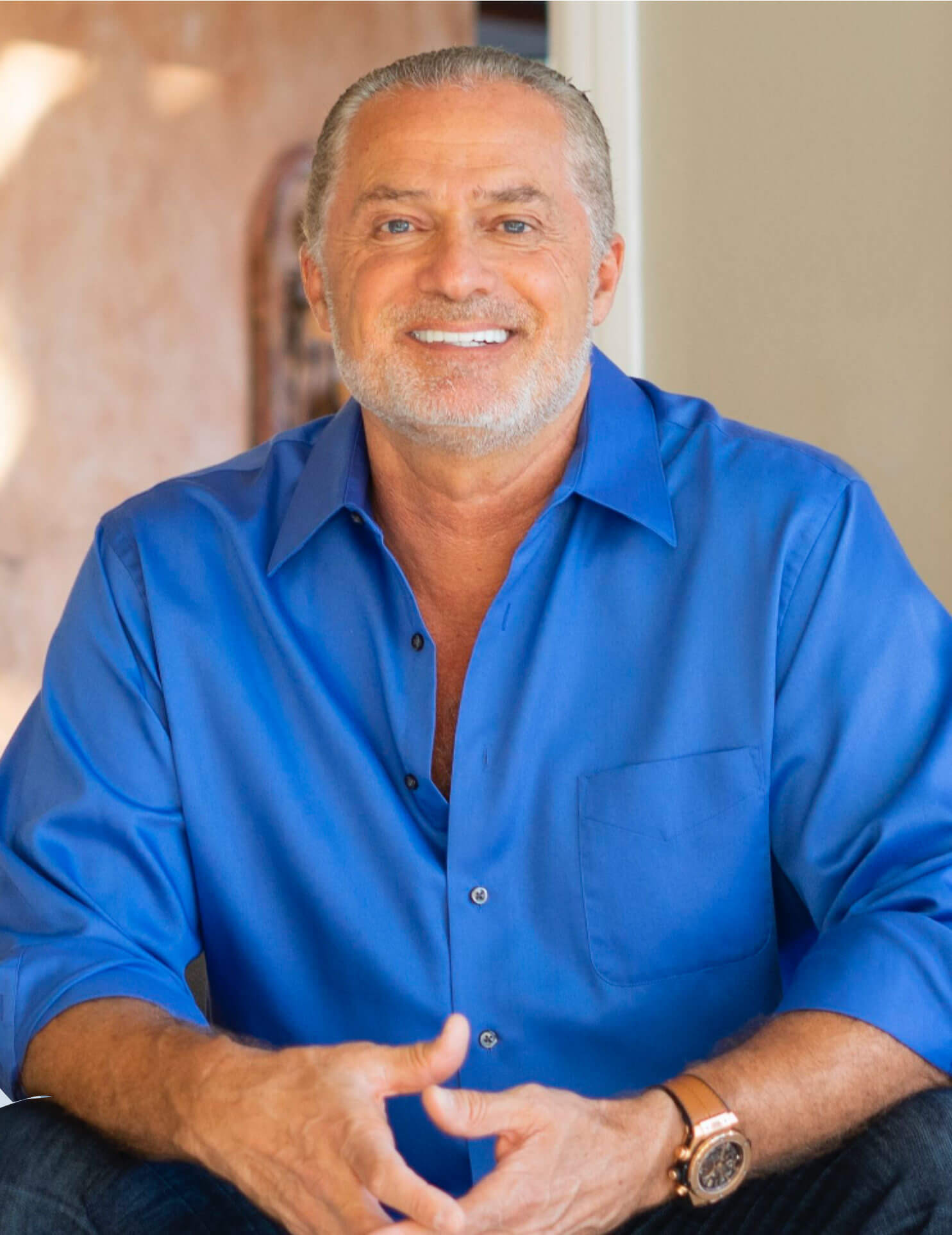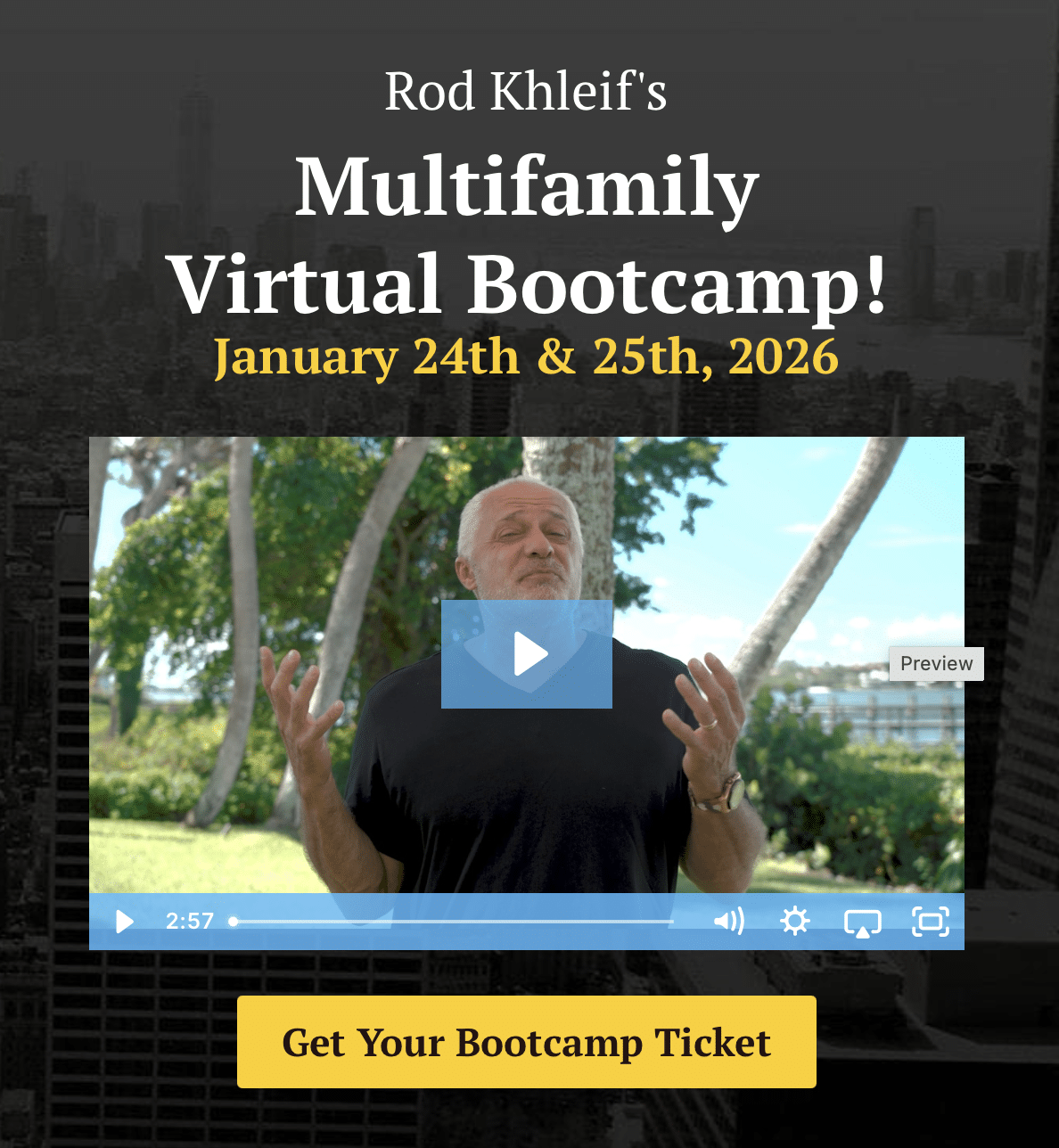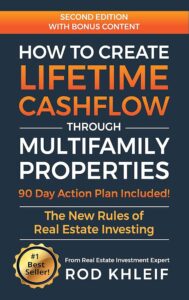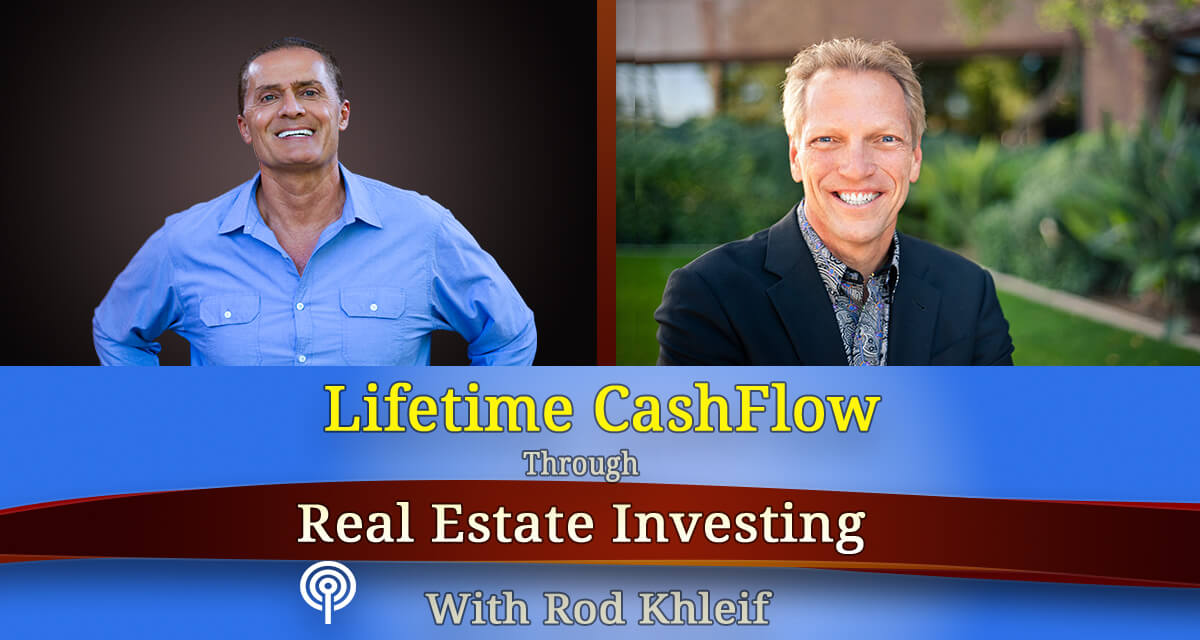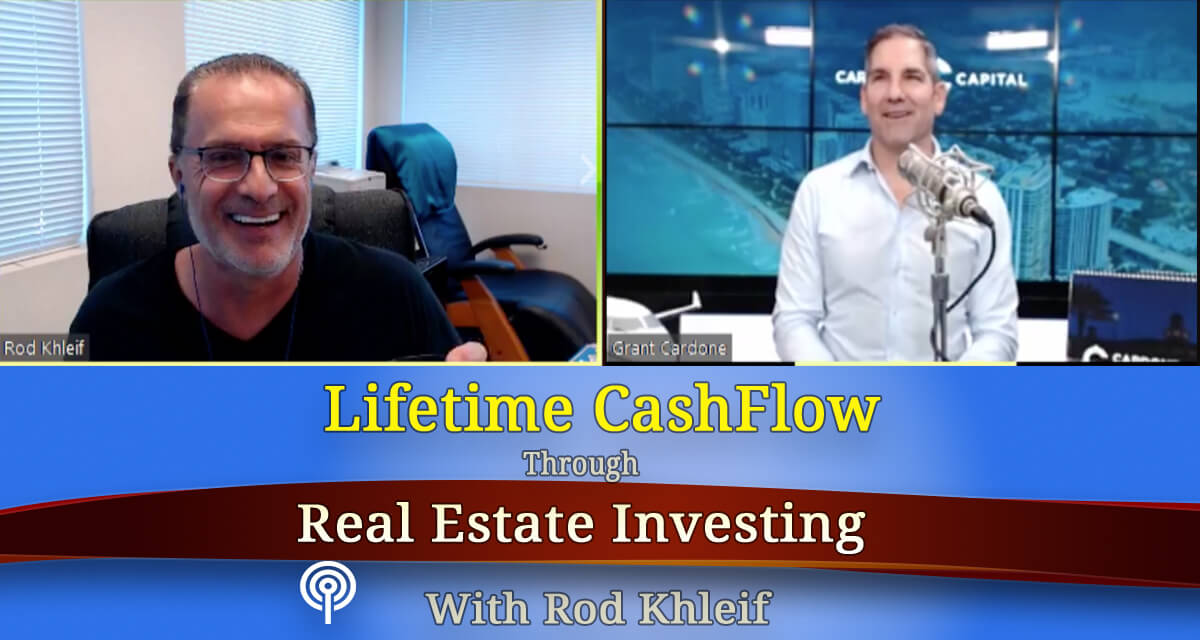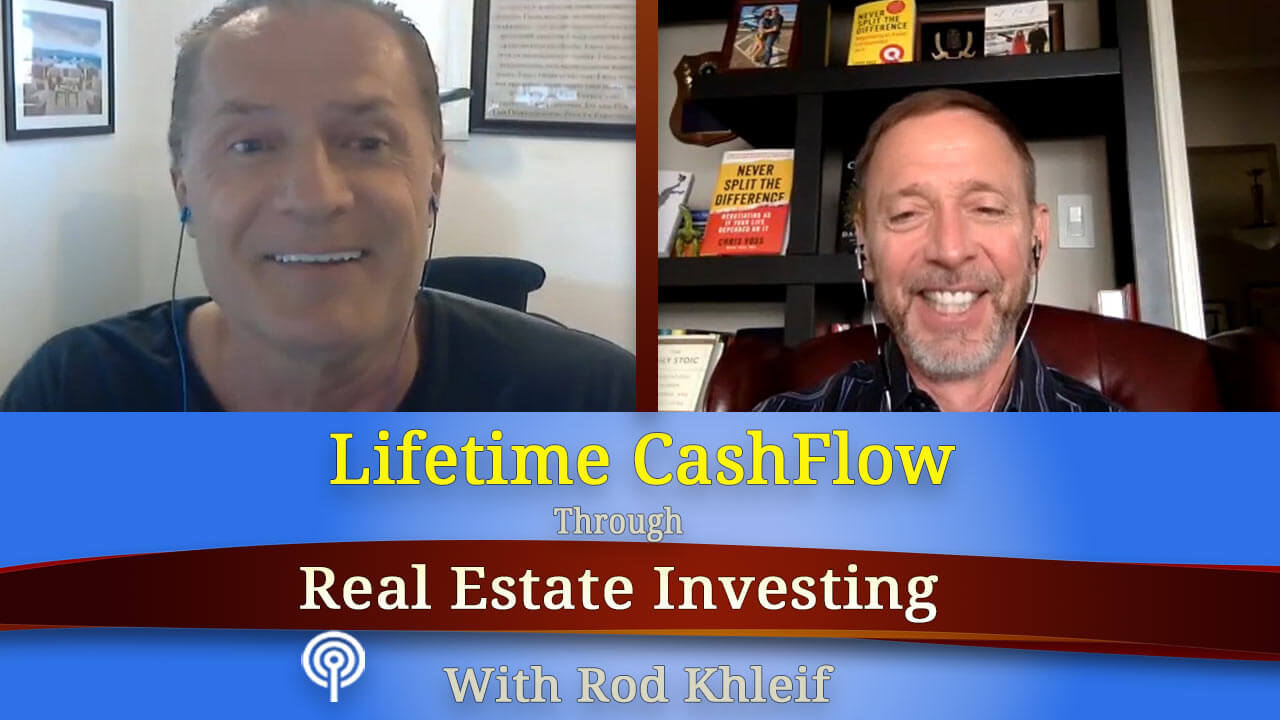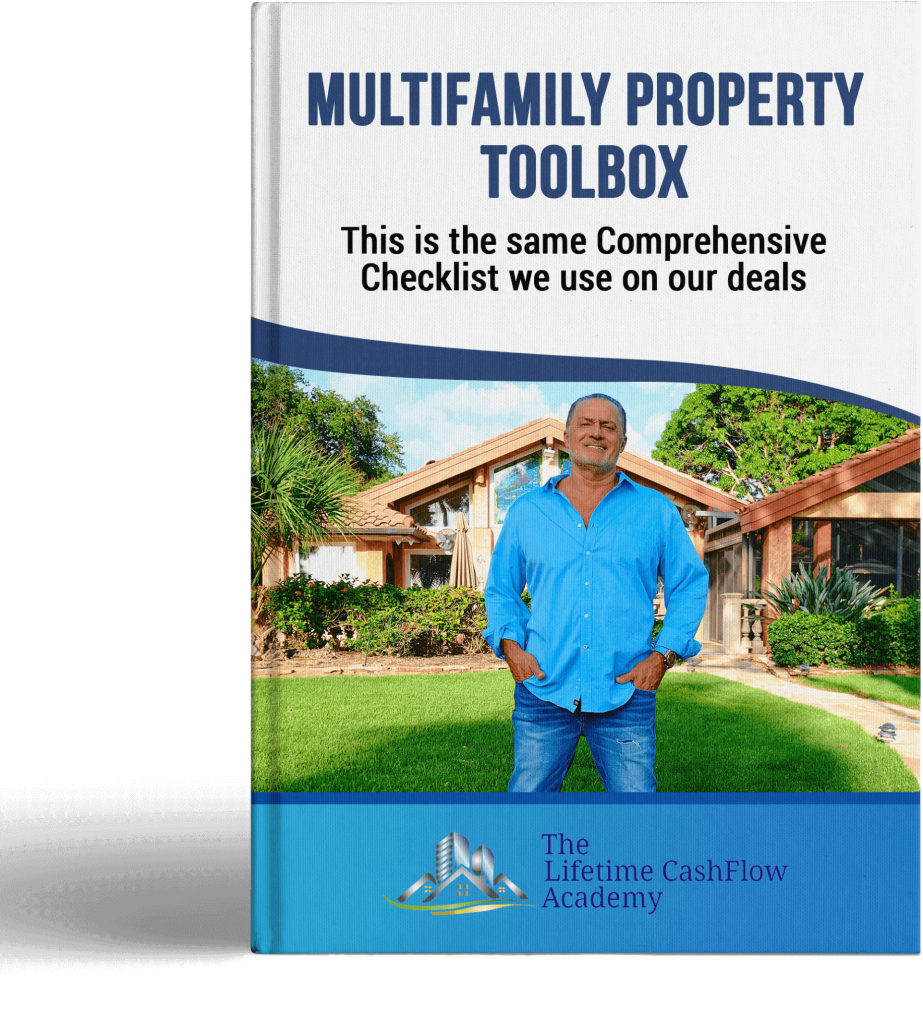How to Start Strong in Multifamily Real Estate with Kyle Mitchell
Kyle Mitchell Bio
Kyle Mitchell is a dynamic professional known for his versatile expertise and innovative approach. With a career marked by adaptability and a passion for continuous learning, Kyle brings a fresh perspective to every project he undertakes. Though specific details of his professional background are not available, his unique ability to connect ideas and drive creative solutions sets him apart. Kyle’s insights are particularly relevant to this episode as he explores themes of innovation, problem-solving, and personal growth. Beyond his professional endeavors, Kyle is known for his enthusiasm and commitment to making a positive impact, making him a compelling and engaging guest for our audience.
In this episode, Kyle Mitchell shares his inspiring journey from corporate management to closing his first 42-unit multifamily syndication and securing a 128-unit deal under contract. Here’s what you need to know to start strong in multifamily investing:
1. Transitioning from Corporate to Multifamily Investing
Kyle began in golf management, overseeing millions in revenue and dozens of employees. He started investing in single-family homes but quickly realized the limitations of turnkey properties and landlord-unfriendly markets. That pushed him to multifamily, where scalability and cash flow potential are far greater. The lesson: don’t get stuck in single-family turnkeys if you want to build real wealth.
2. The Power of Meetups for Building Investor Networks
Kyle credits meetups as a game-changer. By stepping out of his comfort zone and starting a Long Beach meetup chapter, he built a strong investor network that funded half of his first deal. Whether it’s meetups, podcasts, or social media, creating reach and adding value is critical. And don’t wait to be an expert—lead the group and you’ll be seen as one.
3. Market Research and Due Diligence
Before hitting the road to Tucson, Kyle and his team vetted markets by analyzing population growth, rent trends, wage increases, and especially job diversity. Avoid markets overly reliant on one industry. Build broker relationships by phone first, then visit to show commitment. This groundwork is essential for finding the right deals.
4. Financing Challenges and Syndication Nuances
Kyle’s first deal faced lender hurdles, especially around adding experienced partners and navigating 506(b) syndication rules, which restrict advertising to known investors only. He learned the hard way that you must have a strong team and clear financing strategy upfront. Switching lenders late in the process was stressful but ultimately saved the deal and lowered the interest rate by 80 basis points—a huge win.
5. Building a Strong Real Estate Team
Coming from a management background, Kyle applied his people skills to managing property managers and systems. He emphasizes that real estate is a team sport. Early mistakes taught him the importance of assembling experienced partners and professionals to execute the business plan successfully.
6. Mindset and Self-Development Are Non-Negotiable
Kyle invests heavily in mindset—attending Tony Robbins events, reading transformational books like Miracle Morning, and practicing daily gratitude and discipline. He reminds us that success requires pushing beyond comfort zones and committing fully. His mantra: “If you can’t, you must.”
7. Sacrifices and Rewards
Kyle gave up a six-figure salary to pursue multifamily full-time, living on one income and budgeting carefully. But the payoff is building a scalable, passive income stream that can change his family’s future.
Key Takeaways for Aspiring Multifamily Investors:
- Get out of your comfort zone and lead in your local real estate community.
- Build strong relationships with brokers and investors before chasing deals.
- Vet markets thoroughly—look for population, rent, wage growth, and job diversity.
- Understand syndication rules (506(b) vs. 506(c)) and build your team early.
- Never rely on cash flow to cover capital improvements—plan your finances carefully.
- Invest in your mindset daily; it’s the foundation of long-term success.
- Be willing to make sacrifices now for financial freedom later.
Kyle’s story is a powerful reminder that massive action, persistence, and the right team can turn a dream into reality. If you’re serious about multifamily investing, start building your network and mindset today.
If you want to dive deeper into multifamily investing strategies and mindset, be sure to check out my boot camp and coaching program. Remember, the life of your dreams is on the other side of discomfort. Let’s get after it!
— Rod Khleif
In Today’s Episode You’ll Learn
Main Topics:
- How Kyle Mitchell Transitioned from Corporate Management to Multifamily Investing
- The Role of Meetups in Building Investor Networks and Raising Capital
- How to Identify Strong Multifamily Markets for Investment
- How to Vet and Secure Financing for Multifamily Properties
- 506(b) vs. 506(c) Syndications: Key Differences for Raising Capital
- The Importance of a Strong Real Estate Team and Partnerships
- Managing Risk and Overcoming Challenges in Multifamily Investing
- Why Self-Development is Critical for Real Estate Success
Full Podcast Transcript: Ep #361 – Kyle Mitchell on How to Start Strong in Multifamily
Rod Khleif: Hi! I’m Rod Khleif. Each and every week I record an interview with a thought leader that I know you’re gonna get a ton of value from. Now here on YouTube are the video versions of my podcast, Lifetime Cash Flow through Real Estate Investing. Now to make sure you get the latest information please subscribe and hit the notification bell. Let’s get started.
Rod Khleif: Welcome to another edition of How to Build Lifetime Cash Flow Through Real Estate Investing. I’m Rod Khleif, and I’m thrilled you’re here, and I’m pleased to interview my friend today. And he’s my friend as he has come to my boot camp. He came to my LA boot camp. I have actually spoken at his meet-up in Orange County which I think came as a result of that boot camp. And you know, his name’s Kyle Mitchell. A great guy, just got married as well, so we’ll have to congratulate him on that, and he’s closed on a 42-unit syndication. They have a hundred and twenty-eight unit under contract right now. So we’re gonna dig into how he got there. And what’s next, welcome to the show, brother.
How Kyle Mitchell Transitioned from Corporate Management to Multifamily Investing
Kyle Mitchell: Thanks for having me on Rod. I’m really honored to be on your show.
Rod Khleif: No, it’s absolutely my pleasure. So, why don’t we go back like we do on most of these interviews and have you talk about how you got started in this business and kinda bring us to present day.
Kyle Mitchell: Yeah! Sure. So, originally I was in the golf business as a Regional Manager for a golf management company and you can liken that to almost a third-party property management company. Municipalities hired our company to come in and manage their properties for them. So, that’s what I did for a full-time job for about 15 years; managed about 20 million in revenue and turned 50 employees. And while I was working at that job I just knew I had to put my money to work and I had had a bad experience with the stock market, didn’t really invest much in it, but just didn’t have a good feeling about that. I wanted more control. So I started looking into, at one point actually, single-family homes. Started reading some books, listening to some podcasts, going to some events. And so, I started buying some single-family homes. Some in Southern California but quickly got out of that market after realizing it’s just not a landlord-friendly state and there’s not a lot of cash flow out here. So, I started buying turnkeys because I was pretty busy at the time with my full-time job so I wanted something a little more hands-off but I could still have a little more control over. So, bought some turnkeys. Got to about nine turnkeys out of state – still have those although I am starting to unload those. So…
Rod Khleif: Same city or different places?
Kyle Mitchell: Three different markets. I was trying to diversify a little bit and spread out my risk.
Rod Khleif: Would you do that again if knowing what you know now?
Kyle Mitchell: Buying in different markets or buying single-family?
Rod Khleif: Buying turnkey, number one. And buying in those different markets, number two.
Kyle Mitchell: I would spread out my risk in different markets for sure because actually one of the markets is just not doing very well for me right now. So, the fact that I have three different markets has worked out; buying turnkey, looking back at it now, it was really tough to scale and when you want to dispose of those turnkeys they’re really not worth what they once were when you bought them.
Rod Khleif: Right.
Kyle Mitchell: Right?
Rod Khleif: Right, right.
Kyle Mitchell: So…
Rod Khleif: I’m dead set against them just so you know. This is why I asked the question.
Kyle Mitchell: Yep.
Rod Khleif: I really believe that the only person that benefits on those is the person that flipped the house and sold it to you. But, so, I’m really glad that you’re in multifamily. Sorry I interrupted. Please continue.
Kyle Mitchell: Yeah! No problem. So, I completely agree with you there. Even though I’ve cash flowed a little bit off of them, probably in the end of the day wasn’t worth it, but I learned a lot. So, at that point, having found it tough to scale with single-family homes, especially with turnkey, I started looking for some alternative investments and found multifamily. At that point I had been looking into multifamily and hearing a lot of podcasts and happened to come to your event in LA that you had here. Prior to that I was going to a couple of meet-ups in the local area and there was one in particular, one of your students – I think his name was Powell – and he started to meet up on multifamily and there weren’t very many around at that time. Now, there’s a ton of them. And so, you know, I got friendly with Powell, went to your event and, it was during one of the breaks actually, that you said; get out of your comfort zone. Whatever you do, you’ve just got to get out of your comfort zone. And that’s something that my wife and I now kinda live by. We do that three or four times a year. And so, at the break I just asked Powell, I said; hey, would you be willing to branch off with your meet-up so I can start a Long Beach chapter out here and go from there. And so two days later he emailed me asking, ‘are you about this?’ And I said; yeah, let’s do this. Let’s go. So that’s kinda how I got started in multifamily and started the educational platform that we now have. So now we have, you know, two meet-ups that we do – we’re even starting a third one in Phoenix that I’m gonna fly out to and input on every week. And that’s with that meet-up group. So…
Rod Khleif: Wow.
Kyle Mitchell: It’s really been beneficial for us in establishing an educational platform, but the biggest takeaway I got from your event was to get out of your comfort zone and start doing things that, you know, other people won’t do. And so from there, you know, …
The Role of Meetups in Building Investor Networks and Raising Capital
Rod Khleif: So, like in your case, would you agree that putting on these meet-ups gets you in touch with potential investors for your deals? Would you say they’ve been instrumental in helping you raise money?
Kyle Mitchell: Yeah. There’s no doubt about it. I would say half of our investors from our first deal were from those meet-up groups that we built relationships with over a year.
Rod Khleif: Right. Which is why it’s such an incredible vehicle. And so, guys, you know, I don’t care if it’s a meet-up group – if you’re gonna do this business, you have to have a way to establish reach; and you can do it with a meet-up group, you can do it through a podcast like I did, through a Facebook group, YouTube channel, LinkedIn, Instagram – whatever your choice of vehicle is. In this case, Kyle Mitchell’s is a group, and a lot of my students use the same vehicle. It’s all about getting that reach and adding value. So please continue. I just wanted to hammer that point home on the value of creating reach through a group like that.
Kyle Mitchell: Yeah, 100%. And, you know, attending meet-ups is a good thing but being the person at the front of the table is even better, right? It’s been greatly beneficial for us for sure. So, about seven or eight months later, I ended up leaving my full-time job and, you know, if you asked me, do I suggest that? Highly, I do not suggest that. But it was just the perfect time – I’d been planning to leave my full-time job for about two years because I knew there was another way I wanted to go. So, I’d been saving up for a couple of years and the opportunity presented itself, and so I took it, with the support of my wife, which was one of the main reasons I was able to leave my job and really pursue multifamily real estate full-time.
Rod Khleif: Yeah. Now listen, I want to circle back to something you just said about being at the front of the room. Guys, even if you’re not an expert in this business yet, start a meet-up group because you’ll be perceived as the expert. It’s like acting as if – when you are the organizer of a group like this, people have the perception that you’re an expert in the space. You can bring in speakers, brokers, investors, even people like me. When I was in LA for two weeks with my wife, I ended up speaking 11 times at different meet-ups. It’s an incredible vehicle. Don’t hold yourself back just because you’re not fully experienced yet. I wanted to encourage you to find your vehicle. Now, let’s talk about these deals, Kyle Mitchell. You did a 42-unit syndication. Can you dissect that for us? How did you find it? How did you finance it? How did it come together?
Kyle Mitchell: Yeah! Sure. So, about two and a half months after I left my full-time job, we had been able to find this property and at that point I was actually driving to Tucson – which is about a seven-and-a-half-hour drive. We would leave about 2:00 in the morning, get there at 9:00. This would be on Lolita’s day off – her only day off during the week – and we’d meet with brokers, tour as many properties as we could, meet with local investors and then drive back, getting home about 1 or 2 the next morning. So, on one of those drives while we were calling brokers asking, “Hey, do you have anything we can tour?” one said, “Yeah, actually I just got the keys to this place. I have no financials, no rent roll. Would you like to tour it with you?” So, I said, “Yeah, sure, why not?” And after touring it, we liked the property enough to start really digging in and doing our due diligence. We had about a three-week head start before that thing went to market, and within a week of it going to market, we had it under contract.
Rod Khleif: All right. I wanna stop you because you’re dropping some bombs here that I hope people are picking up on. So, let me ask you – Tucson is the market, yes?
Kyle Mitchell: Correct.
Rod Khleif: Okay. So, before you went to Tucson, what did you do in advance of driving out there at 2:00 in the morning? By the way, guys, how many of you are willing to get up at 2:00 in the morning to go chase your dream, okay? The people that are successful in any business are the ones willing to do what others aren’t willing to do. And Kyle Mitchell, you just gave a great example of that. For me, personally, it was knocking on doors of people in foreclosure when I was in my 20s to buy houses. But when you’re willing to do what other people won’t, you will be successful. So that’s the first bullet point I want you listeners to pick up on. But secondly, what did you do in advance of going to Tucson? Speak to that for a minute.
How to Identify Strong Multifamily Markets for Investment
Kyle Mitchell: Yeah. Well, obviously, we vetted the market. We asked: Is there population growth? Is there rent growth? Is there wage growth? Is there job diversity? One of the number one things I look at now is job diversity. You really don’t want a market to be more than 20% reliant on one industry or one employer. And so, those were a lot of the major things that we looked at. We also looked at the Phoenix market, which picked up well with the rest. So, we kinda looked at all of Arizona. Once we got that down and felt comfortable with it, we started going out there driving around. At that point, we weren’t even looking at specific properties; we were just getting familiar with the market so that when a property did come up, we could say, “That’s not an area we want to deal with.” We would talk to brokers and ask, “Hey, what areas are B to C plus class that we should consider?”
Rod Khleif: You did this out there? Or did you call in advance of this?
Kyle Mitchell: Called in advance. Focus…
Rod Khleif: That’s what I wanted to hear. So guys, you do not have to buy in your backyard. If you’re buying two or three states away, you start these relationships over the phone. Call about a listing, identify who the brokers are; and when you fly out or drive out there, have appointments set up – you’re not just flying blind. Would you agree with me on this, Kyle Mitchell?
Kyle Mitchell: Yeah, 100%. You’ve got to do some upfront work and build those relationships upfront, but then the next step is getting in front of them face to face, showing them you’re serious, and getting out there in the market.
How to Vet and Secure Financing for Multifamily Properties
Rod Khleif: That is the absolute next step – that’s how they know you’re real. So guys, if you’re in LA, San Diego, San Francisco, Manhattan or some of these markets that do not have low-hanging fruit and you’re buying elsewhere, start by making those phone calls, then plan a trip out there. Now you’re blessed, Kyle Mitchell, because your market is drivable. It might not be pleasant, but it’s drivable. Soon you’ll be flying for your meet-ups, but the point is you have to go. They need to meet you, see your integrity, your passion, and know you’re real; then everything changes. So, what happened next?
Kyle Mitchell: At that point, we got the property under contract – which was fantastic – and started going through diligence while building up the investor base for the deal. We had a webinar and started raising money. This deal ended up closing, although we had some troubles with the lender and the lending environment. I think there are some things you just don’t know until you go through them. So, taking action and getting under contract was a huge benefit for us. I learned quite a bit. And we decided to do a smaller deal – 1.6 million, with about a million-dollar raise. My wife and I said, “Hey, we think we can do this. We’ve been building our investor list for 18 months. We’ve got several people interested. We’re gonna go ahead and raise the money and sponsor this ourselves.” The plan was if, in 30 days, we were not comfortable, we would bring on others to help manage the property with us.
Rod Khleif: So, let me stop you for a second. You did not have an experienced sponsor with multiple doors on the team, at least initially?
Kyle Mitchell: Initially, correct.
Rod Khleif: Initially. Okay.
Kyle Mitchell: Yep.
Rod Khleif: And was the hurdle with the lender due to a lack of multifamily experience?
Kyle Mitchell: No, not really. Our parents were gonna actually sign on the loan, so our net worth and liquidity were there – it was a smaller deal. We were hiring a third-party property management company. What got tricky was when we decided that, even though we believed we could get the raise done on our own, we might need to bring on someone else with experience to manage the property. I had mentioned that to our mortgage broker verbally but not in writing. They started our application with Freddie Mac a little too early, and we had already been underwritten as a group. So, we were one day from being approved when they said, “Hey guys, you can’t add another GP. You’re kinda stuck. You’re on your own.” And when you’re raising money and using other people’s money, it’s important you deliver on the business plan. If you can’t raise all the money, you cannot execute your business plan fully. And we weren’t the type to use the cash flow to then reinvest into the building for improvements.
Rod Khleif: Let me stop you there. Never, ever go into a deal with the mindset of using cash flow to cover your capital expenditures or property improvements. Never do that. Just wanted to hammer that home. Please continue.
Kyle Mitchell: Yep. So, at that point we were stuck between a rock and a hard place: either complete the raise or bring someone else on and switch lenders. With a 506(b) syndication—we already know our investor pool and cannot advertise to new investors—we either had to convince the people who already said no or bring someone else on.
506(b) vs. 506(c) Syndications: Key Differences for Raising Capital
Rod Khleif: Let me stop you again. I apologize, because some of my listeners might not know what a 506(b) is. There are two types of syndications: 506(b) and 506(c). In a 506(b) deal, you have to know the investor and have a strong relationship with them; you cannot advertise. For example, the deals my company does are 506(c) because we advertise and use only accredited investors. What Kyle Mitchell just said is, once you’ve tapped your pool of known investors for a 506(b), you’re stuck because you can’t talk about the deal to someone new. It’s critical to stay on top of your integrity and not take any chances. So please tell us what happened next.
Kyle Mitchell: Yes. So, 29 days to close after we already used our extension. I actually pulled the plug on the current lender, Freddie Mac, and found a new lender. They said they thought they could get this done. It was a risk moving lenders and trying to close in 29 days, as we wanted a Fannie Mae loan. Also, we had to find someone with at least two years’ experience with Fannie Mae loans to sign on, because that was a requirement.
Rod Khleif: Let me stop you there—so you got it with Fannie Mae, meaning someone had to have previous Fannie Mae experience. Please continue.
Kyle Mitchell: Yeah. So, we found that person through our meet-up – we had been building that relationship for 10 months. We also found another person with experience who helped finish the raise and is now assisting with our asset management. So, 29 days later, we closed the deal – basically recording an hour before we had to close.
The Importance of a Strong Real Estate Team and Partnerships
Rod Khleif: Wow.
Kyle Mitchell: And that was the point in the year where the interest rates had dropped. Originally, with Freddie Mac, we were at 5.01%; we ended up getting a 4.2 percentage base point discount, which we hadn’t planned for. I wouldn’t do that process again because it was one of the most stressful 30-day periods ever, but it ultimately worked out for everyone on the deal.
Rod Khleif: That’s beautiful. Wow. What a huge drop in the interest rate.
Kyle Mitchell: Yeah.
Managing Risk and Overcoming Challenges in Multifamily Investing
Rod Khleif: That’s a big deal – 80 basis points. Remember, there’s 100 basis points in a percent of interest. So 80 basis points is 80% of one percent. Love it. That’s an awesome story. Now, you see the value of this whole meet-up thing. Do you fly out there once a month for these?
Kyle Mitchell: I’m out there pretty much every week – if not every other week – so it’s built right into our schedule.
Rod Khleif: I love it, man. Massive freakin’ action.
Kyle Mitchell: That’s right.
Rod Khleif: So, talk to us about this 128-unit. I know it’s under contract and you might not be able to share everything, but tell us what you can.
Kyle Mitchell: Yeah, there’s not a ton I can talk about, but what I can tell you is that we found it based on the same broker relationships. The business partners that we brought on for the smaller deal were also involved here, which helped expand our network. One of our partners had closed on two deals with this broker in the Phoenix market. We got a sneak peek – only two days – with a couple of other investors before it went out to market. So the day it went on the market, we were ready. One of the benefits, and I’d like to harp on this: if you’re not sure which market to pick, try choosing one that is relatively close. Originally, we were looking at Columbus, Ohio, but the time change and the flying made it difficult. When you’re in Phoenix or Tucson, it’s much easier to get there.
Rod Khleif: So, let’s talk about your core job before real estate. What was your role prior to quitting?
Kyle Mitchell: I was a Regional Manager for a golf management company. The biggest part of that job was managing people. And once you close on a property, that’s what you need to be really good at – managing the property manager, ensuring they’re hiring the right people, and implementing the systems to succeed. I took that experience from golf management and applied it to real estate management.
Why Self-Development is Critical for Real Estate Success
Rod Khleif: Okay, all right, good. Now tell me, what do you do about your self-talk?
Kyle Mitchell: Self-talk is a big thing for me. I went to Tony Robbins this year, which was huge, and I’m hoping to attend Date with Destiny later in the year. I read all the self-development books and listen to all the podcasts. I’ll be honest, sometimes I struggle with it – it’s not always positive – but you just have to take a step back and look at where you were 12 months ago and realize you’ve come a long way even if you’re not yet where you want to be. Every morning, I start with a workout to get my juices flowing and set the right frame of mind. I always remind myself to be grateful for what life has given me and to push myself out of my comfort zone, like you said.
Rod Khleif: That’s great. I’m so glad you mentioned gratitude because it’s critical and foundational. So, what have you had to give up to make this happen?
Kyle Mitchell: Well, I had to give up a six-figure salary. Now my family lives off one salary, and while we get by, I have to be extremely careful with budgeting to set us up for the future. That’s been one of the biggest challenges.
Rod Khleif: Nice, nice. What’s that behind you on the wall? Is it motivational, or organizational?
Kyle Mitchell: It’s both. Up top, I have a couple of quotes that I live by – one from Tony Robbins. He always says you’re just two millimeters away from getting there, which I relate to as being “three feet from gold” – don’t give up when you’re just that close, because if you can’t do it, you must do it.
Rod Khleif: If you can’t, you must. Love it.
Kyle Mitchell: And another big takeaway from Tony Robbins is: don’t negotiate with yourself. If you commit to something, do it. Just do it. Once you’re in it, you might as well go all in.
Rod Khleif: That’s awesome. I was just on another show with a friend I met at Tony’s resort in Fiji 20 years ago – his name’s Rock Tom – and we talked about how Tony inspires you to just do it. I’m even thinking about Date with Destiny in December. For those wondering, if you see Tony speaking, just do it. So, are there any books that have helped you along the way on the motivational front?
Kyle Mitchell: Yeah, Miracle Morning. It’s one that changed my life – and I’m actually reading Hal Elrod’s new book, The Miracle Equation, now. It got me waking up earlier and starting my day off right. Those habits have such an impact on your mindset and your day.
Rod Khleif: Absolutely. I even had Hal on the show once – his book is one of the gifts I give to my students. And Powell, who got you started with meet-ups, has been doing that consistently for over 500 days now. It’s incredible. He’s gone from managing 50 or 100 doors to 600 or 700, and we’re even partnered on a deal. So, tell me about a mistake you made early on in your real estate journey. Any defining moment?
Kyle Mitchell: Yeah. It was really with the lender – trying to do it all on our own. We thought we could handle everything without building the proper team. In hindsight, I would have built the team earlier. Now, with the team in place, we’re set up to benefit going forward. It’s a reminder that real estate is a team sport – the more people on your side, the better you’ll do.
Rod Khleif: Absolutely. That’s why people keep coming back to my events. By the way, guys, I’ll be in Baltimore on September 27, 28, and 29. If you’re interested in this business, you need to be there. Did you benefit from it, Kyle?
Kyle Mitchell: Huge benefit. Before I started attending your events, I couldn’t speak in front of people. You pushed me to start a meet-up, and though I was shaking in my boots at the first one, here I am now hosting a meet-up, doing podcasts, and even organizing our yearly event. I’m still a bit nervous, but so much more comfortable now. I 100% recommend going to Rod’s events. You not only learn about multifamily, but you also learn to harness the right mindset to push past your limits.
Rod Khleif: Thank you, Kyle, for sharing that. I had no idea that was such a struggle. Remember, the life of your dreams is on the other side of a little discomfort. Thanks for being on the show, brother. You’ve delivered huge value, and I’m sure we’ll see each other again soon.
Kyle Mitchell: Definitely. Thanks, Rod. I appreciate it.
Rod Khleif: Right. Take care. All right, buddy – see you.
Hey, thanks for watching. Please subscribe to my channel. And if you listen to the podcast, join me on iTunes, Stitcher, or wherever you get your podcasts – just search for Lifetime Cash Flow through Real Estate Investing.
Any investment opportunities mentioned on this podcast are limited to accredited investors. Investments will only be made with proper disclosure and subscription documentation, and are subject to all applicable laws.


